UK PMI surveys point to cooling rates of economic growth and job creation in July
The pace of UK economic growth slowed at the start of the third quarter, according to PMI survey data. Although still robust, the expansion of activity was the second-weakest seen so far this year after the General Election-related slowdown in May. The rate of growth has eased in recent months due to the headwinds of a strong pound, sluggish business investment, eurozone uncertainty and weak global demand.
However, although the weighted Output Index of the three Markit/CIPS PMI surveys fell from 57.4 in June to 56.7 in July, it remains consistent with solid economic growth. The pace of expansion of GDP looks to have merely eased from an impressive 0.7% in the second quarter to 0.6% at the start of the third quarter (see here for further details of mapping the PMI against GDP). If growth holds at this pace, the economy is on course to expand by 2.6% in 2015.
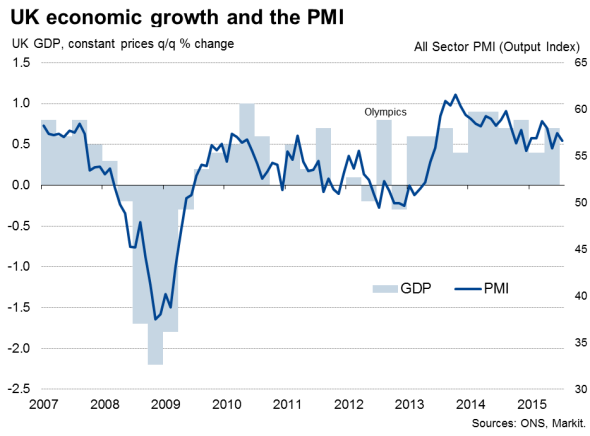
Mixed signals for Bank of England
Despite falling, the PMI remains at a level which has encouraged the Bank of England to tighten policy in the past (see final chart), which will add to the hawkish mood among a divided Monetary Policy Committee. However, there are plenty of excuses to hold off from hiking interest rates any time soon, including zero inflation, a waning rate of job creation, a strong pound hurting exports and the latest signs of growth cooling. Policymakers will also be concerned about the global economic outlook, and slower growth in emerging markets in particular.
Business activity by sector
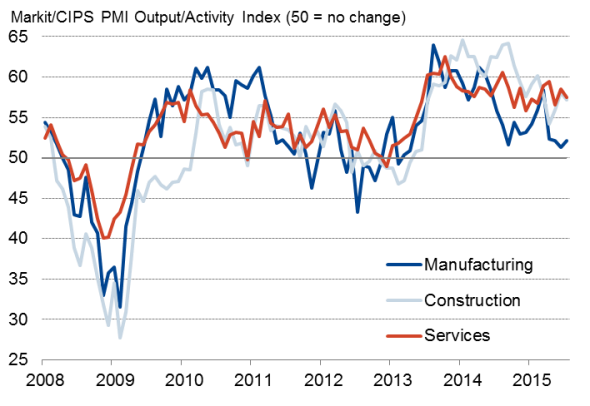
While a rate hike later this year remains a distinct possibility, the majority of Monetary Policy Committee members will most likely want to see stronger numbers than today's PMI before feeling comfortable about voting for higher interest rates.
Service sector-led growth
Growth continued to be led by the service sector, which the PMI indicates grew at a quarterly rate of 0.6% at the start of the third quarter, though that's down from 0.7% in the second quarter, reflecting a dip in the PMI in July.
Robust growth was also seen in the construction industry, for which solid PMI readings indicate far healthier business conditions than recent flat official data seen so far this year, the quality of which the strong survey data continue to question. However, it is evident from the PMI data that the building industry has seen growth slow considerably over the past year, with the rate of expansion easing in the housing, commercial and civil engineering sectors alike.
The worst performance was seen in the manufacturing sector, where the weakness of the PMI is pointing to goods production acting as a marginal drag on the economy again at the start of the third quarter. Factory production fell 0.3% in the second quarter.
A similar divergent trend between the sectors was seen in terms of orders books, with new orders for manufactured goods showing the smallest rise since last September, while inflows of new business in the service sector hit a three-month high and also remained encouragingly strong in construction.
The PMI data therefore suggest that economic growth remained disappointingly unbalanced in July, with a dependence on service sector growth while manufacturing struggles.
While demand for many services is being buoyed by rising real consumer incomes (with inflation low and wages rising), goods producers are struggling as growing domestic demand for consumer goods is being offset by falling business investment and deteriorating exports. New orders from abroad for goods fell for a fourth successive month in July, attributed to a combination of weak demand in many overseas markets and the strong pound. Sterling has risen 10% against the euro so far this year and is up to its highest since 2007 on a trade-weighted basis.
Hiring trends slows to near two-year low
While the slowdown in business activity signalled by the surveys was only modest, the hiring trend was more worrying. Employment growth fell sharply to the lowest since September 2013, led by weaker hiring in the service sector. Job creation remained solid in the construction sector and picked up slightly in manufacturing, though the pace of workforce growth in the latter remained especially weak.
Employment
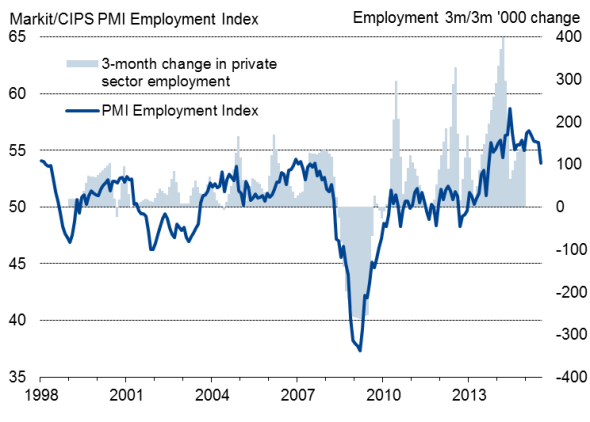
Prices rise at fastest rate for ten months
Wage growth also showed some signs of picking up (offsetting lower commodity prices), especially in services and construction, pushing up input costs. Rising costs in turn fed through to the largest rise in average selling prices for goods and services since September of last year, albeit the rate of increase remaining subdued by persistent intense competition.
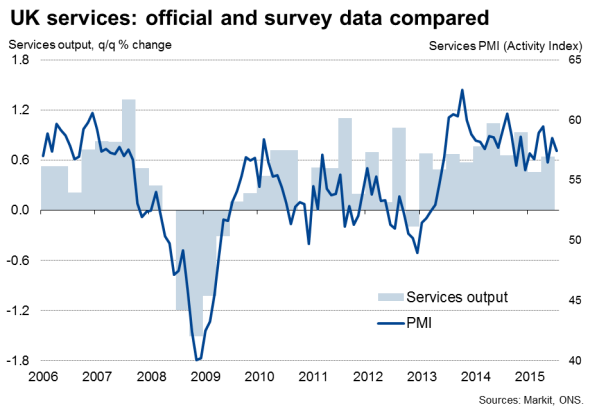
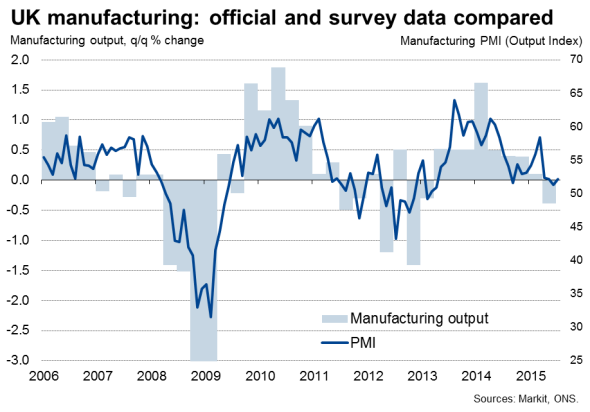
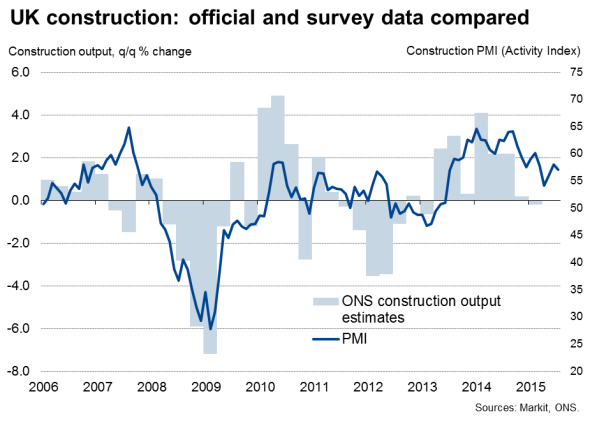
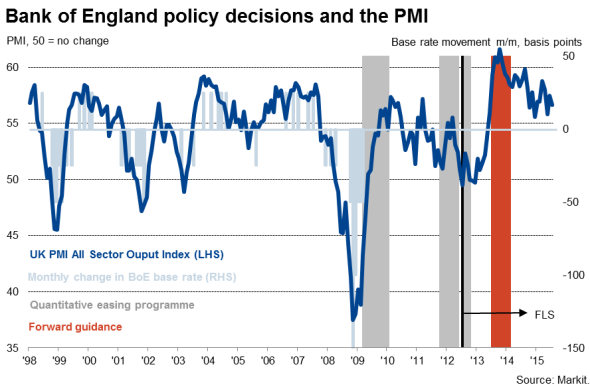
Chris Williamson | Chief Business Economist, IHS Markit
Tel: +44 20 7260 2329
chris.williamson@ihsmarkit.com